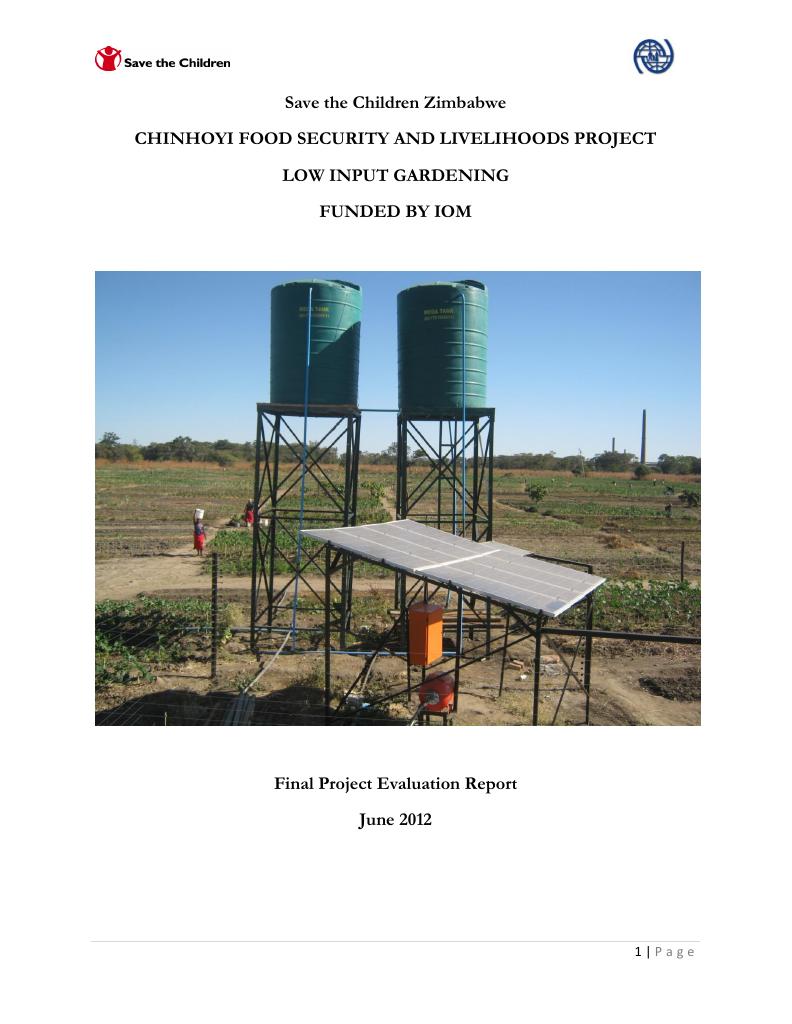Evaluering
Chinhoyi Food Security and Livelihoods Project Low Input Gardening Funded by IOM Final Project Evaluation Report
The intervention in Alaska and Shackleton wards started in October 2009 with ECHO funding and was implemented until end of November 2010. The project was initially designed to respond to the urgent needs of the poorest urban and peri-urban populations of the targeted areas. The Low Input Gardening (LIG) component provided gardening skills and inputs as a basis for the investment of household assets in a longer-term Income-Generating Activities (IGA), towards a year-round food security at household level. In order to ensure the long-term impact of the programme on food security at household level, Save the Children and its implementing partner DAPP embarked on the second stage of programming. The objective of Phase 2 was to formally graduate beneficiaries that are able to maintain their own household food security status, through food diversity and income generated from garden production. While phase 1 emphasized on reaching the survival threshold, part of phase 2 objectives was to ensure that the targeted households graduated from just the survival threshold to the livelihood protection threshold. After the end of ECHO phase 2 in November 2011, another funding (December 2011 to July 2012) was granted by IOM to continue with the beneficiaries in Shackleton and Alaska who were mostly internally displaced populations (IDPs).Purpose/objective (including evaluation questions). The objective of the evaluation was to assess the project achievement of outcomes and impact as well as to document lessons learnt.
